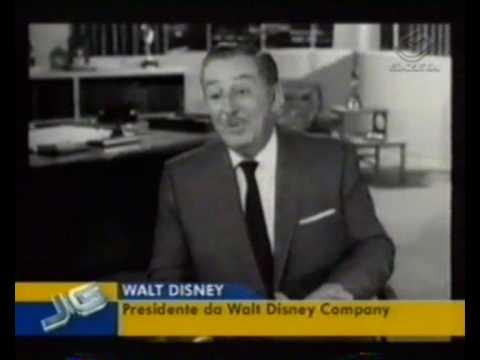JORNAL DA GAZETA - Especial União Soviética 4/4
Summary
TLDRThis transcript details the transformative period of the Soviet Union's decline and the rise of modern Russia. It covers Mikhail Gorbachev's reforms, including glasnost and perestroika, which aimed to modernize the system but led to political instability. The eventual collapse of the Soviet Union in 1991, followed by Boris Yeltsin's presidency, marked a chaotic transition to capitalism. The privatization of state assets, coupled with corruption and inequality, fueled discontent. Vladimir Putin's rise to power brought stability and economic recovery, but with an authoritarian style, leading to an increasingly divided society and a nostalgia for the old communist era.
Takeaways
- 😀 Gorbachev's reforms, including Glasnost and Perestroika, aimed to correct Soviet system problems without dismantling it, but ultimately led to the collapse of the USSR.
- 😀 The 1980s saw severe economic stagnation in the Soviet Union, and by 1985, Gorbachev's leadership was a response to this crisis.
- 😀 Gorbachev's political reforms promoted democracy, including the creation of a functioning Congress of Deputies, shifting away from totalitarian control.
- 😀 Internationally, Gorbachev's reforms led to the fall of the Berlin Wall in 1989 and the collapse of communist regimes in Eastern Europe.
- 😀 While Gorbachev's reforms were popular, they failed to address the economic crises, and nationalist movements within Soviet republics grew stronger.
- 😀 The election of Boris Yeltsin as president in 1991 marked a key shift in Russian politics, with 11 Soviet republics declaring independence shortly thereafter.
- 😀 Yeltsin's presidency was marred by economic collapse, hyperinflation, and significant political dissatisfaction among the population.
- 😀 The privatization of state-owned industries during the 1990s led to massive inequality and the rise of oligarchs and the Russian mafia.
- 😀 Vladimir Putin's first term marked an attempt to stabilize Russia, with a deal made to prevent oligarchs from influencing politics.
- 😀 Putin's leadership saw significant improvements in wages, pensions, and Russia's global standing, earning him high popularity, but his authoritarian style evokes comparisons to Stalin.
- 😀 Despite economic recovery, Russia's new wealth was concentrated in the hands of a few, while the standard of living for many Russians remained difficult, and nostalgia for Soviet times lingered.
Q & A
What was the economic situation in the Soviet Union during the 1980s?
-During the 1980s, the Soviet Union faced an acute economic crisis. The economic stagnation of the 1970s worsened, and industries lost competitiveness in all sectors.
What were Gorbachev's key reforms during his leadership?
-Mikhail Gorbachev introduced two major reforms: glasnost (openness) and perestroika (restructuring). Glasnost promoted political transparency and freedom of speech, while perestroika aimed to reform the economy, political system, and society without overthrowing the existing system.
How did Gorbachev's reforms affect the Soviet Communist Party?
-Gorbachev's reforms, particularly the creation of a functioning Congress of Deputies, diminished the monopoly of the Soviet Communist Party. Political reforms led to the establishment of a more democratic system with elections and checks on power.
What was the significance of the Berlin Wall's fall in 1989?
-The fall of the Berlin Wall in November 1989 symbolized the end of Communist control in Eastern Europe and was a direct result of Gorbachev’s announcement that Eastern European countries would be allowed autonomy in resolving their internal affairs.
What role did Boris Yeltsin play in the collapse of the Soviet Union?
-Boris Yeltsin was elected as the first president of the Russian Soviet Socialist Republic in June 1991. His election marked a significant shift in Russian politics, and after the failed coup in August 1991, Yeltsin's leadership was crucial in the eventual dissolution of the Soviet Union.
How did the collapse of the Soviet Union affect the former republics economically?
-The collapse of the Soviet Union caused severe economic imbalance in the former republics. In Russia, for example, GDP dropped by 50%, which led to widespread economic hardship, hyperinflation, and the disintegration of the former socialist system.
What was 'shock therapy' and how did it affect Russia's economy?
-Shock therapy was an economic strategy implemented by Yeltsin’s government that aimed to rapidly transition Russia from a planned economy to a market economy. The policy led to severe shortages of basic goods, massive privatization, and created significant inequality, benefiting oligarchs and the Russian mafia.
How did Vladimir Putin's rise to power impact Russia's recovery?
-Vladimir Putin, who assumed the presidency in 1999, focused on stabilizing Russia's chaotic economy and rebuilding the nation's international standing. He made agreements with oligarchs to keep them out of politics and used oil and gas revenues to improve wages, pensions, and national pride.
Why is Putin's popularity so high among the Russian population?
-Putin's popularity stems from his efforts to restore Russia’s global status, improve the economy, and raise the standard of living for many Russians. His leadership is often seen as a recovery of Russian self-esteem, and his administration's focus on stability has garnered significant public support.
What are the contradictions in Putin's leadership style?
-While Putin has gained support for stabilizing Russia and restoring its international prominence, his leadership style is often described as authoritarian and ruthless, with limited regard for democratic freedoms. This approach has led some to compare him to Stalin in terms of his control over political adversaries and the lack of political freedoms.
Outlines

此内容仅限付费用户访问。 请升级后访问。
立即升级Mindmap

此内容仅限付费用户访问。 请升级后访问。
立即升级Keywords

此内容仅限付费用户访问。 请升级后访问。
立即升级Highlights

此内容仅限付费用户访问。 请升级后访问。
立即升级Transcripts

此内容仅限付费用户访问。 请升级后访问。
立即升级浏览更多相关视频

JORNAL DA GAZETA - Especial União Soviética 3/4

Russia & Ukraine: A History of Rivalry?

KAPAN KALIYUGA BERAKHIR? - HINDU TIMES INFO

Soviet Style Economics Was Insane and Here’s Why

Mao's Art of War: The Long March and the Chinese Civil War

SEJARAH SINGKAT TERBENTUK HINGGA RUNTUHNYA NEGARA ADIDAYA UNI SOVIET
5.0 / 5 (0 votes)
